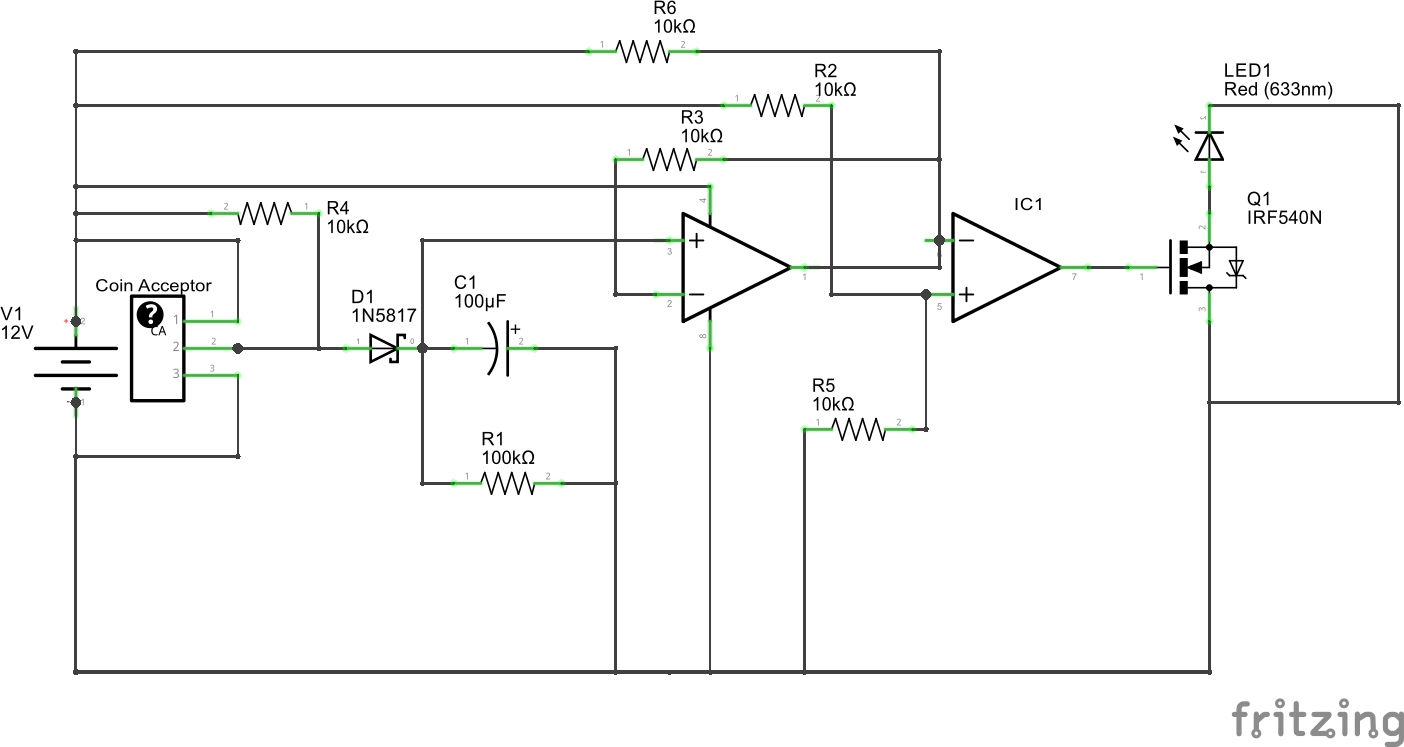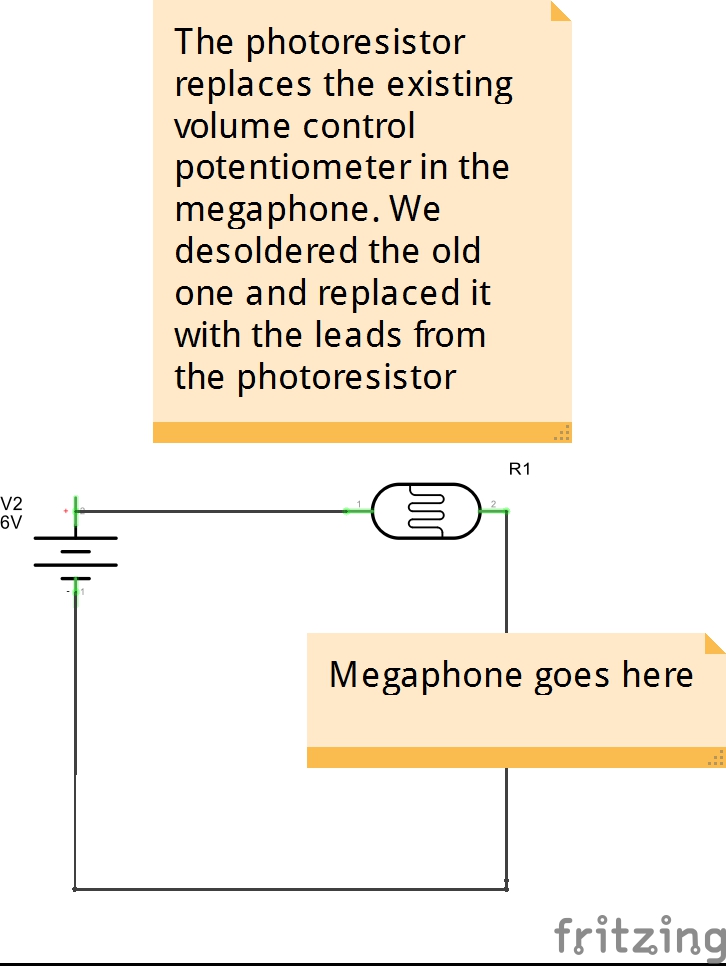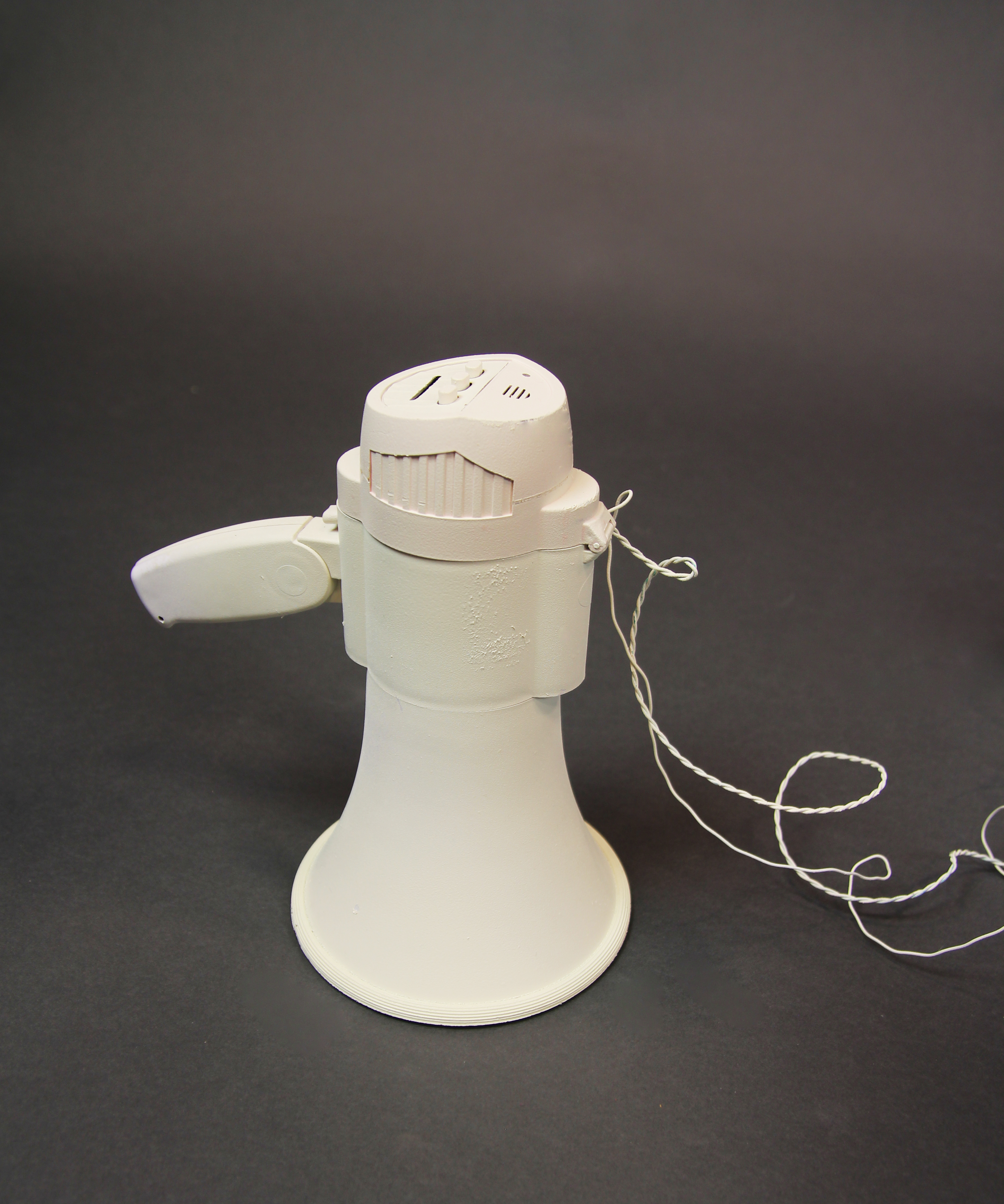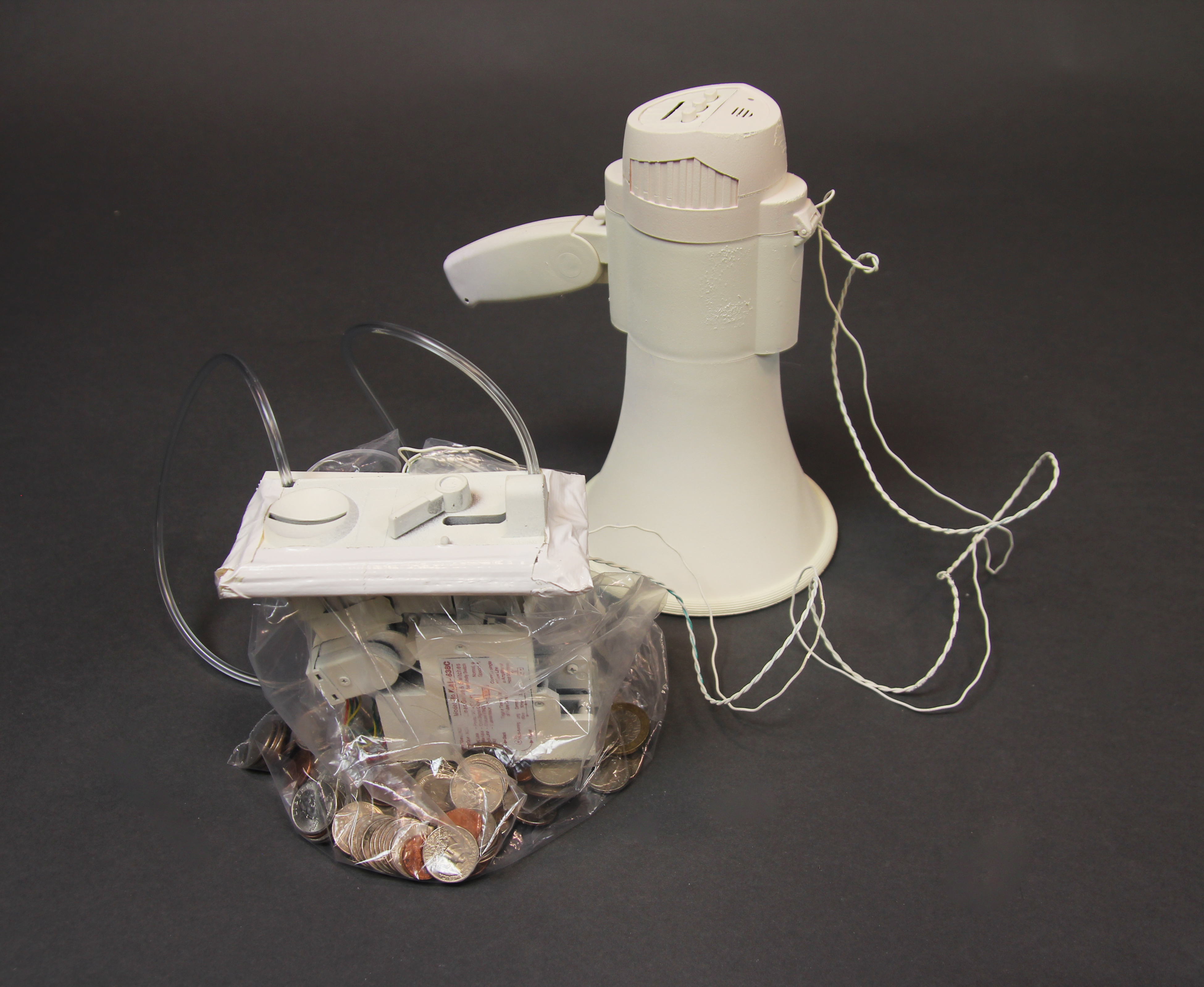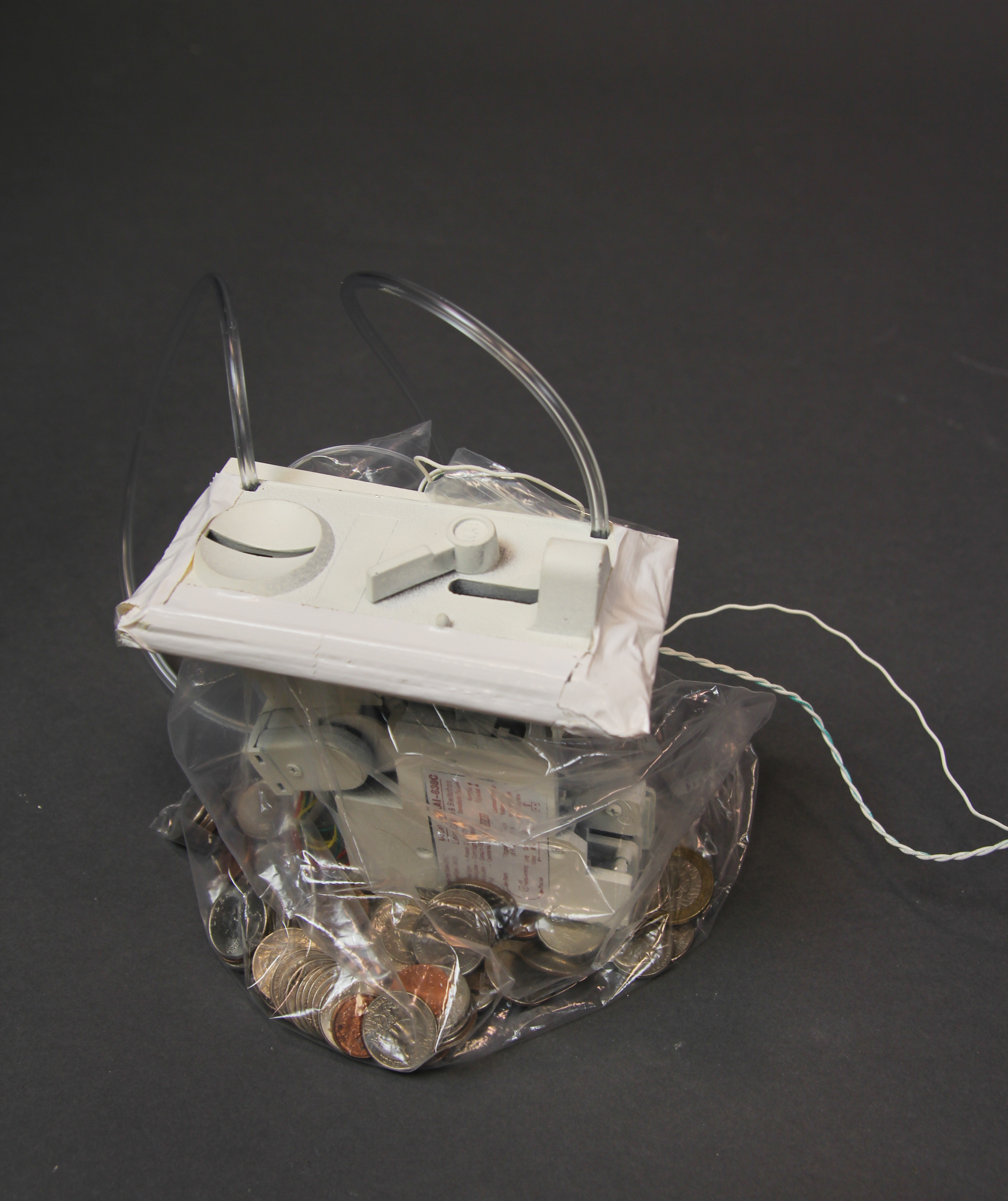1A – Basic Circuits Project – Pay-Per-Speech, Freemium Speech
|
Group Members: Miles Peyton, Horace Hou, Rachel Ciaverella, Aditi Sarkar Roles: Miles Peyton as Tutor, Horace Hou as Integrator, Rachel Ciaverella as Designer, Aditi Sarkar as Scribe Introduction We think speech is free in the same way that Facebook is free: speech is freemium. Along these lines, we created pay-per-speech, a freemium megaphone for activists. Its output volume is governed by the number of coins it receives, i.e. it amplifies the most when it is fed a high number of coins in a short period of time. Pay-per-speech uses currency as input, and sound as output. There are two main components to the device: the coin acceptor and the megaphone. These devices are unified by a bulb and photocell. More precisely, the coin acceptor generates a voltage that powers a lamp, whose brightness is measured by a photocell that in turn controls the volume of the megaphone. Technical Notes The form for our project was partially predetermined by the shapes of the megaphone and the coin detector. We decided on making the coin collector into a heavy necklace meant to evoke the feeling of constraints of shackles of some sort. The transparent wire tubing we used isn’t very comfortable, and cuts slightly into the user’s neck when worn. We chose to spray paint the megaphone white and used a clear bag as the receptacle for coins to give the item a sterile and corporate feel. We used two separate circuits to create the project – one dealing with the output from the coin acceptor and one modifying the volume level based on a photoresistor’s reading. The coin acceptor outputs a voltage every time a coin is put in. These voltages control how brightly the bulb is burning – every time a coin is added, the bulb dims. This is read by a photoresistor, which we used to replace the existing 4-pin potentiometer that controlled the volume in the megaphone. Here is the circuit diagram for the coin acceptor and light bulb: And one for the photoresistor and megaphone:
Photos
|

